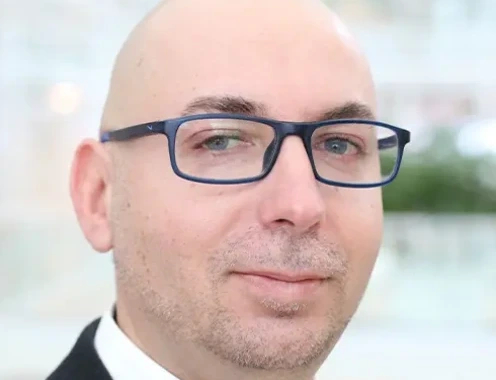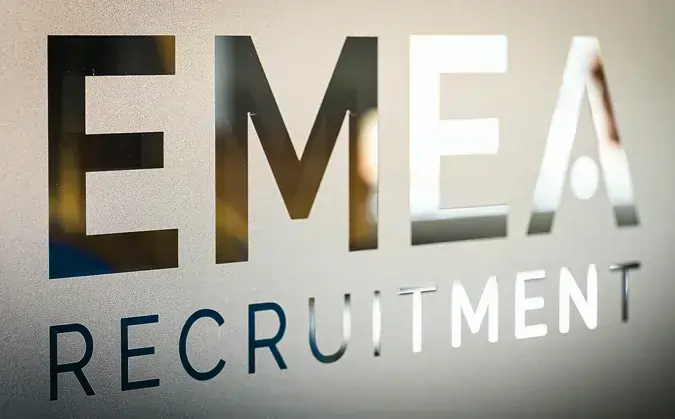Tijani Djaziri - Global Vice President, HR Digitization & Organization and Rewards at gategroup


Tijani Djaziri is the Global Vice President, HR Digitization & Organization and Rewards at gategroup in Zurich, where he’s been for over six years. He previously spent more than eight years at Dufry Group and two years at Sellbytel. Tijani started his career as an Auditor/Consultant at Mazars.
You started your career working for Mazars as an Auditor/Consultant. What attracted you to Human Resources?
I realized I wanted to move into HR at university. The various political and human aspects of organization was a fascinating discovery back then, and it kept being the most appealing side of HR throughout my career. The strategic aspect or organizational development - whether on the pure organizational side of things or people empowerment - has been a constant driver in my HR path in various stages of my career.
Even though, in the early stages of my HR life, the focus was mainly around basic organization skills in putting together processes and clear guidelines of HR best practices, it was always driven by a strategic view to improve the business capacity, to face daily challenges in alignment with the overall business strategy.
As I grew with the role and gained experience, I managed to reach this strategic goal to bring HR to a level above the usual administration role it was assigned to, with fresh and pragmatic approaches - mainly data driven to bring more fairness, together with additional efficiencies.
You have implemented and led HR projects on a global scale. How do you manage integrating strategies across different cultures and environments?
The challenging part of global projects is that all the various regions involved come with different priorities and focuses. Most of the stakeholders are usually struggling with their day-to-day issues and do not necessarily understand or even care about the global strategic necessity; they are stuck within their scope of responsibilities and don’t have a global vision around HR.
Hence, helping them change their views can prove challenging, and can require a lot of energy and time to help them evolve to another level of thinking.
The other challenge is usually to align global objectives with local ones, which comes with a lot of exchanges and compromises on both sides; the difficult part being to stay aligned with the global target, while compromising on specific details, generally ruled by legal constraints.
How do you manage internal stakeholders to see the value of HR technology and digitalization?
Managing internal stakeholders is a key skill to drive digitalization and HR technology initiatives. To convince stakeholders of the value of HR technology, I had to align the HR technology strategy with business goals and priorities, through various workshops with them, defining the business processes and aligning them for a single set of rules to be globally implemented.
This helped to demonstrate the impact of HR technology on operational excellence and business value through leveraging data and analytics to showcase the benefits and ROI [return on investment] of HR technology.
Further to this, throughout the implementation journey, aside from the governance element, I had to communicate effectively and frequently with all stakeholders to address their needs and concerns, build a change management strategy through newsletters, regular calls and meetings, and end user guides and videos to improve the end user experience.
All these initiatives helped to foster a culture of innovation and experimentation in HR across the organization.
Your LinkedIn profile mentions you have implemented new global HR systems with very limited resources. What obstacles did you face under these circumstances?
The main challenge in the implementation project I handled at gategroup was related to resources. Even though we managed to get the budget on the licence and partner side of things, from the HR perspective, we had to convince the regions to allocate a full-time, dedicated resource in each one of them (at their cost) to help with implementation.
Ultimately, this approach was very beneficial, as it helped each region feel part of the project - not only as an execution element, but more as a business partner, as these resources (SMEs: Subject Matter Experts) had a saying in shaping the project. They were also a key SPOC [single point of contact] with the regional HR leaders to ensure alignment and have all stakeholders moving at the same speed under the global coordination.
What excites you about HR technology?
In a fast-paced, technological world, HR needs to cope with this overall evolution as much as any other department. In the context of global companies with branches spread across the world and multiple timezones, where time is of the essence, evolution is a must if a company wants to keep up to speed.
I believe HR technology is the solution to help improve the efficiency and effectiveness of HR management. HR systems can automate and streamline various tasks, such as recruitment, payroll, performance appraisals, training and development, and employee engagement. By doing so, HR systems can reduce manual errors, save time and costs, and enhance the quality of HR services.
Another business strength of HR technology is that it can support strategic decision making and organizational performance. HR systems can collect and analyse data on various aspects of human capital in real time, such as skills, competencies, productivity, satisfaction, and retention. By using this data, HR tech can provide insights and recommendations on how to optimize the workforce, align HR practices with business goals, and measure the impact of HR initiatives on business outcomes.
Ultimately, it pushes HR to become a strategic business partner, rather than a simple support or admin function, as it used to be.
How have you, as a leader, created a good working culture in your teams?
The key element in this exercise has been to always value transparency and collaboration, involving all team members in the project with clear plans and clear governance. Even though this governance approach wasn’t applied at the project start, its implementation brought clear boundaries to all stakeholders (internal/external) on the task split and responsibilities. This helped to identify and fix issues quicker when they popped up, and also have a better understanding of the root cause and assign it to the right resource.
Aside from that, knowledge sharing and internal mobility (mostly) laterally, helped to grow internal technical knowledge and know-how, and helped progress much faster in the early stage of the project. It also helped to face challenges in a more structured and efficient way to enhance the product and improve the usage level for all users.
Thank you to Tijani for speaking to our Human Resources recruitment team in Switzerland.
Views and opinions contained within our Executive Interviews are those of the interviewee and not views shared by EMEA Recruitment.






You can also use your social account to sign in. First you need to:
Accept Terms & Conditions And Privacy Policy